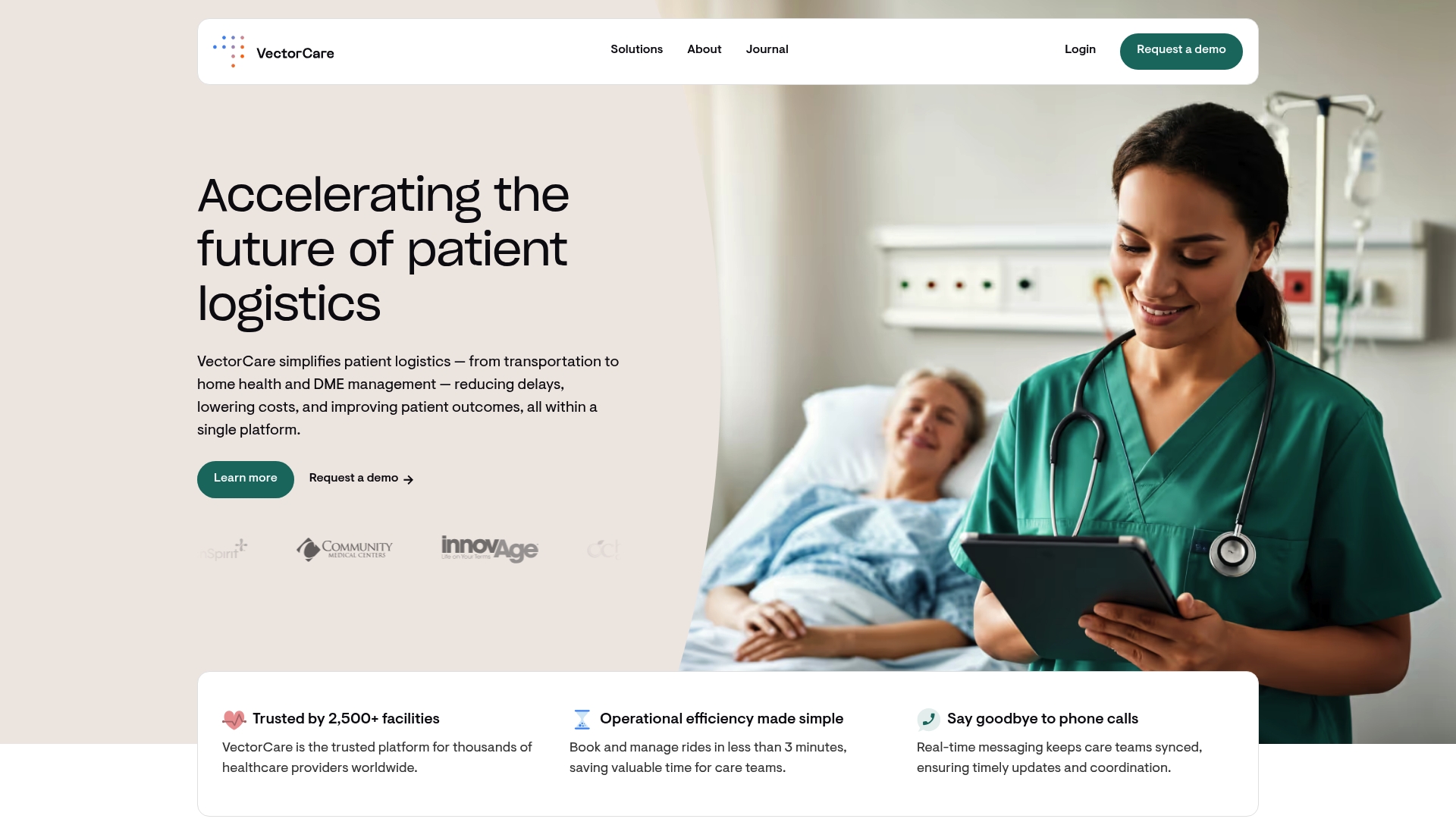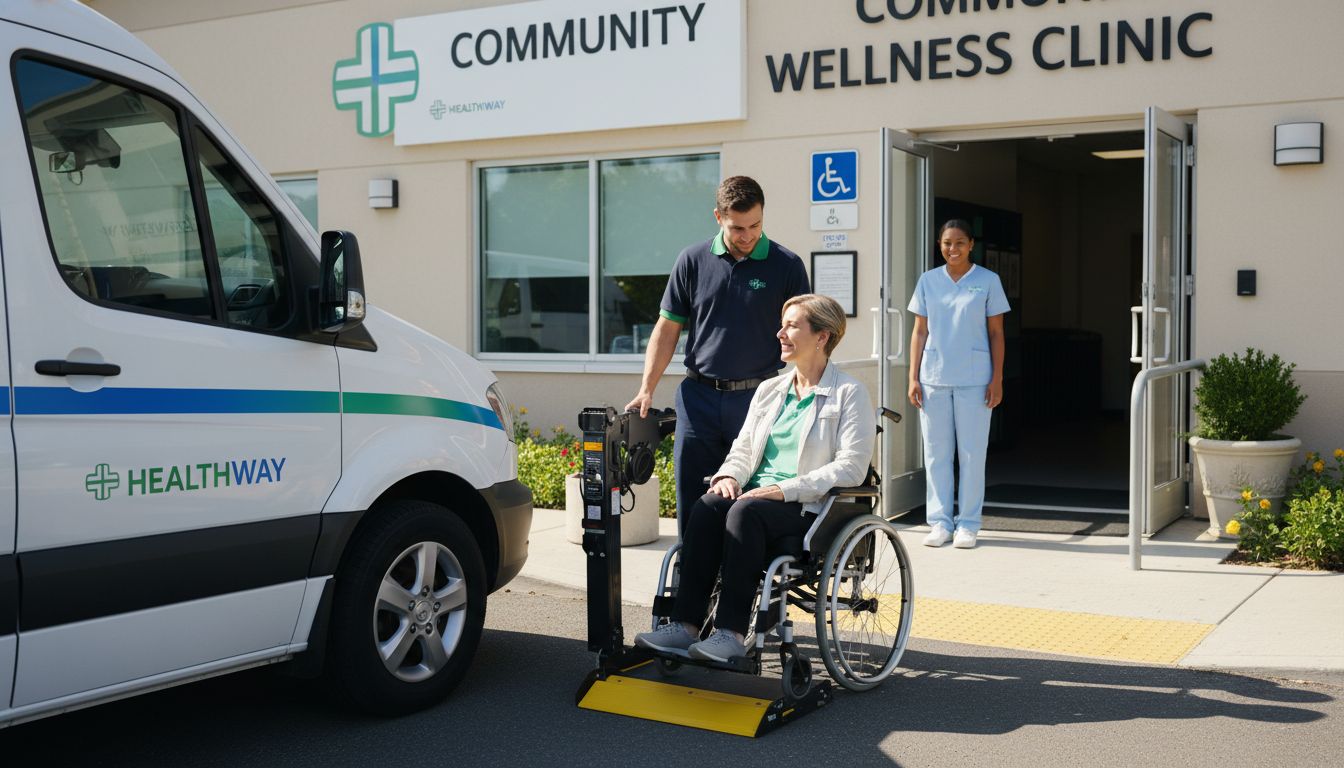What Is Care Navigation? Guide for Healthcare Providers

Care navigation is turning complex healthcare systems into something more manageable for patients and providers alike. Children enrolled in patient navigator programs showed a staggering 69 percent reduction in risk of hospitalization. Most people would expect new medical tech or breakthrough treatments to be behind results like that. The real driver is often the simple act of guiding patients through their care with a personal touch and clear direction.
Table of Contents
- Defining Care Navigation And Its Key Roles
- How Care Navigation Improves Healthcare Delivery
- Benefits For Providers, Hospitals, And Agencies
- Implementing Care Navigation Across Health Systems
Quick Summary
| Takeaway | Explanation |
|---|---|
| Care navigation enhances patient experience. | Personalized guidance helps patients navigate healthcare systems, improving satisfaction and engagement. |
| Key roles of care navigators include education. | Navigators provide valuable information on treatment options, helping patients understand their medical circumstances. |
| Operational efficiency improves through care navigation. | Streamlined processes and better coordination reduce administrative burdens and enhance resource allocation. |
| Addressing social determinants is crucial. | Care navigation helps tackle barriers like transportation and language, improving healthcare access for vulnerable populations. |
| Care navigation can reduce hospital readmissions. | Systematic support minimizes unnecessary admissions, promoting better chronic disease management and treatment adherence. |
Defining Care Navigation and Its Key Roles
Care navigation represents a critical patient-centered approach that transforms how healthcare services are delivered and experienced. At its core, care navigation is a comprehensive strategy designed to guide patients through the complex and often fragmented healthcare landscape, ensuring they receive coordinated, efficient, and personalized care.
The Fundamental Purpose of Care Navigation
Care navigation is more than just a supportive service - it’s a strategic intervention that addresses systemic challenges in healthcare delivery. Healthcare providers recognize that patients frequently struggle with understanding treatment pathways, coordinating multiple specialists, managing administrative requirements, and navigating insurance complexities. Care navigators serve as patient advocates, bridging critical gaps between medical providers, patients, and support systems.
The primary objectives of care navigation include reducing barriers to care, improving patient understanding, and creating smoother transitions across different healthcare settings. By providing personalized guidance, care navigators help patients overcome logistical, financial, and communication challenges that might otherwise prevent them from receiving optimal medical treatment.
Key Roles and Responsibilities of Care Navigators
Care navigators play multifaceted roles that extend far beyond simple administrative support. According to health system research, their responsibilities typically encompass several critical dimensions:
The following table summarizes the key roles and responsibilities of care navigators as outlined in the article, helping providers quickly understand their fundamental functions.
| Role / Responsibility | Description |
|---|---|
| Patient Assessment | Conducting comprehensive evaluations of patient needs, medical history, and potential care barriers |
| Care Coordination | Facilitating communication between healthcare providers, specialists, and support services |
| Education and Empowerment | Providing accessible information about health conditions, treatment options, and self-management |
| Logistical Support | Scheduling appointments, managing referrals, and assisting with insurance and financial questions |
| Advocacy | Acting as patient advocates, bridging gaps between medical teams, patients, and support systems |

- Patient Assessment: Conducting comprehensive evaluations of individual patient needs, medical history, and potential barriers to care
- Care Coordination: Facilitating communication between different healthcare providers, specialists, and support services
- Education and Empowerment: Providing patients with clear, accessible information about their health conditions, treatment options, and self-management strategies
- Logistical Support: Scheduling appointments, managing referrals, and helping patients understand insurance coverage and financial assistance options
These professionals serve as dedicated guides who help patients understand complex medical systems, ensure continuity of care, and ultimately improve health outcomes. By offering personalized support, care navigators reduce patient anxiety, enhance treatment adherence, and create more efficient healthcare experiences.
Moreover, care navigation has become increasingly important in addressing healthcare disparities. Our comprehensive platform helps healthcare providers implement robust care navigation strategies that can reach diverse patient populations, ensuring more equitable access to quality healthcare services.
The evolving healthcare landscape demands innovative approaches to patient care, and care navigation represents a powerful solution for meeting these complex challenges. By focusing on individual patient needs and creating supportive, personalized pathways through medical systems, care navigators are transforming how healthcare is experienced and delivered.
How Care Navigation Improves Healthcare Delivery
Care navigation has emerged as a transformative approach that significantly enhances healthcare delivery by addressing complex systemic challenges and improving patient outcomes across multiple dimensions. By creating more efficient, personalized, and patient-centered care pathways, care navigation represents a critical strategy for healthcare providers seeking to optimize service delivery.
Reducing Healthcare System Inefficiencies
Research from the National Institutes of Health demonstrates that patient navigation programs can substantially reduce hospital admissions and readmissions, particularly for patients with multiple chronic conditions. These programs systematically address gaps in care coordination, helping healthcare systems minimize unnecessary medical interventions and streamline patient treatment processes.
The impact of care navigation extends beyond immediate medical interactions. By providing comprehensive support, navigators help patients understand complex medical instructions, manage medication regimens, and follow recommended treatment plans. This approach significantly reduces the likelihood of medical errors, improves treatment adherence, and ultimately leads to more predictable and effective healthcare outcomes.
Addressing Social Determinants of Health
According to Health Affairs research, care navigation plays a crucial role in addressing social determinants of health that often create barriers to effective medical care. The Accountable Health Communities demonstration revealed that by systematically addressing patients’ social needs, care navigation can lead to fewer emergency department visits and hospital admissions.
Care navigators help patients overcome practical challenges such as transportation difficulties, financial constraints, language barriers, and limited health literacy. Our comprehensive platform supports healthcare providers in implementing targeted strategies that reach diverse patient populations and ensure more equitable access to healthcare services.
Enhancing Patient Outcomes and Experience
The effectiveness of care navigation is particularly pronounced in vulnerable patient populations. A compelling study found that children enrolled in a patient navigator intervention experienced a remarkable 69% reduced risk of hospitalization compared to those without navigation support. This statistic underscores the profound impact of personalized, proactive healthcare guidance.
By providing continuous support, care navigators help patients feel more confident and empowered in managing their health. They serve as trusted advocates who translate complex medical information, coordinate between different healthcare providers, and ensure patients receive comprehensive, cohesive care. This approach not only improves clinical outcomes but also significantly enhances patient satisfaction and engagement with the healthcare system.

Ultimately, care navigation represents more than just a support service - it is a strategic approach to reimagining healthcare delivery. By focusing on individual patient needs, breaking down systemic barriers, and creating more responsive and personalized care pathways, care navigation is transforming how healthcare services are conceptualized and delivered.
Benefits for Providers, Hospitals, and Agencies
Care navigation offers transformative advantages for healthcare providers, hospitals, and agencies by addressing critical operational challenges and creating more efficient, patient-centered healthcare delivery systems. These strategic benefits extend far beyond traditional care models, providing comprehensive solutions that improve organizational performance and patient outcomes.
Operational Efficiency and Resource Optimization
Research published in the Journal of General Internal Medicine demonstrates that care navigation programs significantly enhance care coordination and provider satisfaction while reducing overall healthcare utilization. By streamlining complex administrative processes, care navigation enables healthcare organizations to allocate resources more effectively, minimize redundant interventions, and focus on delivering high-quality patient care.
Healthcare providers experience reduced administrative burden through integrated navigation systems that automate communication, track patient progress, and facilitate seamless information exchange between different departments and healthcare professionals. This approach not only improves operational workflows but also reduces potential medical errors and enhances overall system efficiency.
Improving Patient Outcomes and Organizational Performance
According to research from the National Institutes of Health, care navigation plays a crucial role in reducing hospital readmissions, facilitating timely care transitions, and addressing systemic healthcare disparities. By implementing comprehensive navigation strategies, hospitals and agencies can systematically improve patient follow-up, chronic disease management, and treatment adherence.
Our comprehensive platform helps healthcare organizations implement advanced navigation techniques that lead to measurable improvements in patient care quality and organizational performance. These strategies enable providers to develop more proactive, personalized approaches to healthcare delivery.
Financial and Systemic Benefits
The Centers for Disease Control and Prevention highlights that care navigation contributes to significant financial benefits for healthcare organizations. By lowering preventable hospitalizations, improving chronic disease management, and enhancing treatment adherence, navigation programs help hospitals and agencies reduce overall healthcare costs.
Key financial advantages include:
- Reduced Readmission Costs: Minimizing unnecessary hospital readmissions through comprehensive patient support
- Enhanced Resource Allocation: Directing healthcare resources more strategically based on patient needs
- Lower Administrative Expenses: Streamlining communication and documentation processes
Moreover, care navigation supports healthcare providers in meeting evolving regulatory requirements and quality metrics. By creating more transparent, coordinated care pathways, organizations can demonstrate their commitment to patient-centered care while simultaneously improving their operational effectiveness.
Ultimately, care navigation represents a holistic approach to healthcare delivery that benefits providers, hospitals, and agencies by creating more responsive, efficient, and patient-focused healthcare ecosystems. As healthcare continues to evolve, organizations that embrace comprehensive navigation strategies will be better positioned to meet the complex challenges of modern medical service delivery.
Implementing Care Navigation Across Health Systems
Implementing care navigation across health systems requires a strategic, comprehensive approach that addresses organizational complexity, technological integration, and patient-centered design. Healthcare organizations must develop robust frameworks that transform traditional care delivery models into dynamic, responsive navigation systems.
Below is a table that outlines key implementation components for successfully integrating care navigation across health systems, as mentioned in the article. This summary provides a quick overview of what organizations need to consider at each stage.
| Implementation Component | Key Considerations / Actions |
|---|---|
| Organizational Culture | Develop patient-centered mindset, prioritize coordinated care |
| Leadership Commitment | Secure executive support and resources for program development |
| Interdepartmental Collaboration | Establish communication channels across healthcare departments |
| Technology Integration | Implement EHR integration, secure communication platforms, analytics, and patient engagement tools |
| Training & Development | Provide training in communication, care coordination, cultural competency, and technology proficiency |
| Performance Measurement | Set and track goals (e.g., reduced readmissions, improved satisfaction, enhanced continuity of care) |
Strategic Planning and Organizational Readiness
Research from health policy experts indicates that successful care navigation implementation demands careful organizational preparation. Healthcare systems must first conduct thorough assessments of current care coordination processes, identifying systemic gaps and opportunities for navigation interventions.
Key strategic considerations include:
- Organizational Culture: Developing a patient-centered mindset that prioritizes holistic, coordinated care
- Leadership Commitment: Ensuring executive support and resources for navigation program development
- Interdepartmental Collaboration: Creating communication channels across different healthcare departments
Providers must also establish clear performance metrics and goals for their care navigation programs, focusing on measurable outcomes such as reduced readmissions, improved patient satisfaction, and enhanced care continuity.
Technology and Infrastructure Integration
Our comprehensive platform enables healthcare organizations to implement advanced technological solutions that support seamless care navigation. Successful implementation requires robust digital infrastructure that facilitates real-time communication, data sharing, and patient tracking.
Critical technological components include:
- Electronic health record (EHR) integration
- Secure communication platforms
- Data analytics and reporting tools
- Patient engagement technologies
Healthcare systems must invest in interoperable technologies that allow smooth information exchange between different care settings, ensuring navigators have comprehensive patient information at their fingertips.
Training and Professional Development
According to implementation research, successful care navigation depends heavily on professional training and continuous skill development. Organizations must develop comprehensive training programs that equip navigators with the necessary clinical knowledge, communication skills, and technological proficiency.
Effective training should encompass:
- Patient communication strategies
- Complex care coordination techniques
- Cultural competency
- Technological system navigation
- Ethical considerations in patient support
Additionally, healthcare systems should establish ongoing professional development opportunities, allowing navigators to continuously enhance their skills and stay updated on emerging healthcare trends and technologies.
Implementing care navigation is not a one-time event but a continuous, evolving process. Healthcare organizations that approach navigation as a dynamic, adaptable strategy will be best positioned to improve patient outcomes, reduce systemic inefficiencies, and create more responsive, patient-centered healthcare ecosystems.
Frequently Asked Questions
What is care navigation?
Care navigation is a patient-centered approach designed to guide individuals through the complex healthcare system, ensuring they receive coordinated, personalized care. It addresses barriers to care, improves patient understanding, and facilitates smoother transitions across healthcare settings.
What roles do care navigators play in healthcare?
Care navigators perform several critical functions, including patient assessment, care coordination, education, logistical support, and advocacy. They help patients understand their medical situations and navigate the healthcare system effectively.
How does care navigation improve patient outcomes?
Care navigation improves patient outcomes by providing personalized support that reduces hospital admissions and readmissions, enhances treatment adherence, and empowers patients to manage their health. It has been shown to significantly reduce risk factors associated with hospitalization.
What are the benefits of implementing care navigation in healthcare organizations?
Implementing care navigation leads to enhanced operational efficiency, improved patient outcomes, and financial savings for healthcare organizations. It optimizes resource allocation, reduces administrative burdens, and creates a more patient-centered healthcare experience.
Transform Care Navigation Into Real Results With VectorCare
Are you struggling to keep patient care truly coordinated and efficient? The article highlights how care navigation bridges critical gaps — yet many organizations still face fragmented workflows, lost time, and complex logistics. When your team must manage patient transportation, referrals, and essential health services, even small delays or miscommunications can damage trust and outcomes.

Experience the tangible difference with VectorCare’s digital platform. Streamline your entire patient logistics process with user-friendly, no-code workflows that unify scheduling, communication, and vendor management. Say goodbye to time-consuming manual tasks and hello to automated, real-time updates for everyone involved. Visit https://www.vectorcare.com now and see how you can lower operational costs, increase patient satisfaction, and turn care navigation goals into measurable improvements for your organization.
Recommended
- 3 Ways to Grow Your Service Provider Business with VectorCare – VectorCare
- How Coordinated Platforms Can Unite Private and Public Interests to Support Community Care – VectorCare
- Integrated Patient Care with VectorCare and VitalStream – VectorCare
- 3 Proven Strategies to Improve Medicare Ratings – VectorCare



